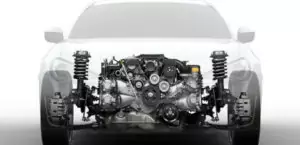The 1.3-liter Fiat 199B1000 or 1.3 Multijet engine has been assembled at a plant in Poland since 2009 and is installed on many models of the concern such as Panda, Punto, as well as Alfa Romeo Mito and Lancia Ypsilon. The same power unit was installed on the Opel Astra J and Corsa D under its A13DTE index.
Multijet II family: 199B1000, 198A2000, 198A3000, 198A5000, 250A1000, 263A1000.
Specifications
| Production years | since 2009 |
| Displacement, cc | 1248 |
| Fuel system | Common Rail |
| Power output, hp | 95 |
| Torque output, Nm | 200 |
| Cylinder block | cast iron R4 |
| Block head | aluminum 16v |
| Cylinder bore, mm | 69.6 |
| Piston stroke, mm | 82 |
| Compression ratio | 16.8 |
| Features | DOHC, intercooler |
| Hydraulic lifters | yes |
| Timing drive | chain |
| Phase regulator | no |
| Turbocharging | BorgWarner BV35 |
| Recommended engine oil | 5W-30 |
| Engine oil capacity, liter | 3.2 |
| Fuel type | diesel |
| Euro standards | EURO 5/6 |
| Fuel consumption, L/100 km (for Fiat Punto 2014) — city — highway — combined |
5.3 3.5 4.2 |
| Engine lifespan, km | ~270 000 |
| Weight, kg | 140 |
The engine was installed on:
- Alfa Romeo MiTo I (Type 955) in 2009 – 2018;
- Fiat 500 II (312) in 2009 – 2018;
- Fiat Fiorino III (225) since 2010;
- Fiat Idea I (350) in 2009 – 2012;
- Fiat Grande Punto I (199) in 2009 – 2012;
- Fiat Panda III (319) in 2015 – 2018;
- Fiat Punto IV (199) in 2012 – 2018;
- Fiat Tipo II (356) since 2015;
- Lancia Musa I (350) in 2009 – 2012;
- Lancia Ypsilon II (846) since 2011.
Disadvantages of the Fiat 199B1000 engine
- With very active operation, this diesel engine often consumes oil;
- The timing chain and especially its hydraulic tensioner are not very resourceful;
- There are problems with starting in winter due to freezing of crankcase ventilation or engine control unit;
- When the particulate filter burns, fuel can enter the oil and its level rises;
- Weaknesses include the mass air flow sensor, the EGR valve and the turbine geometry change system.






